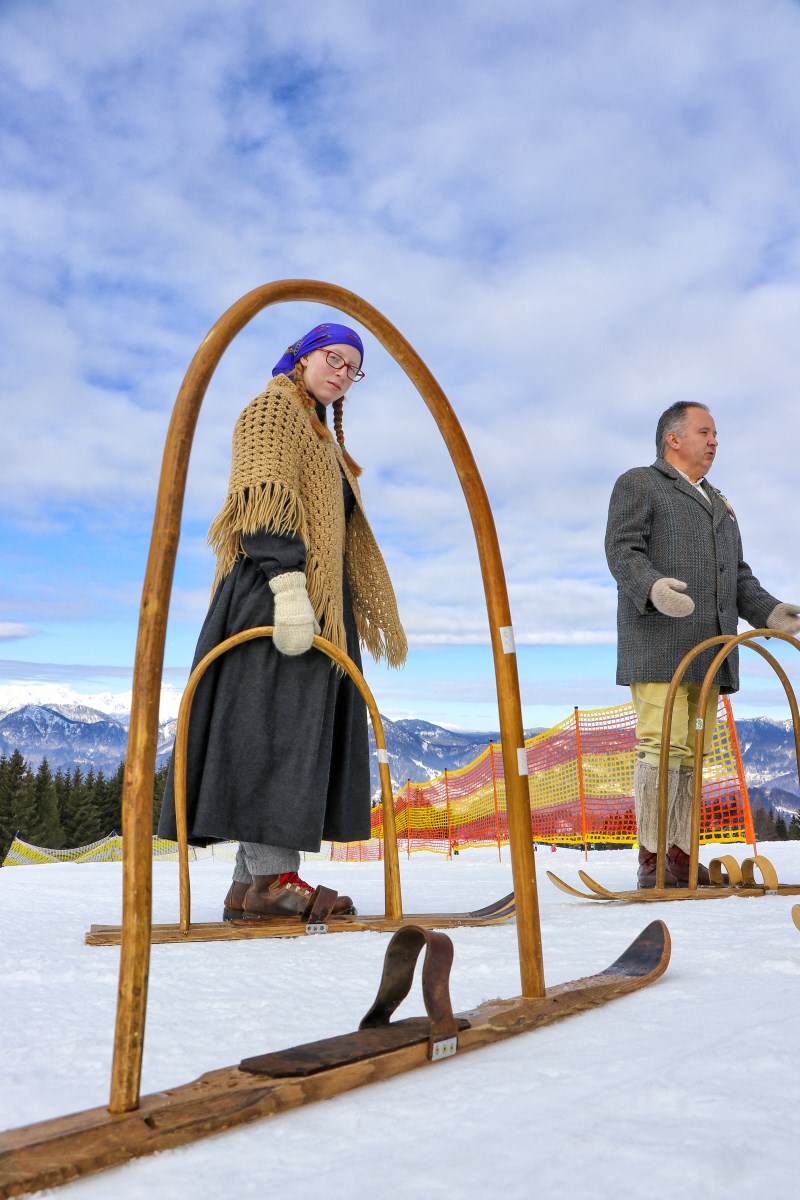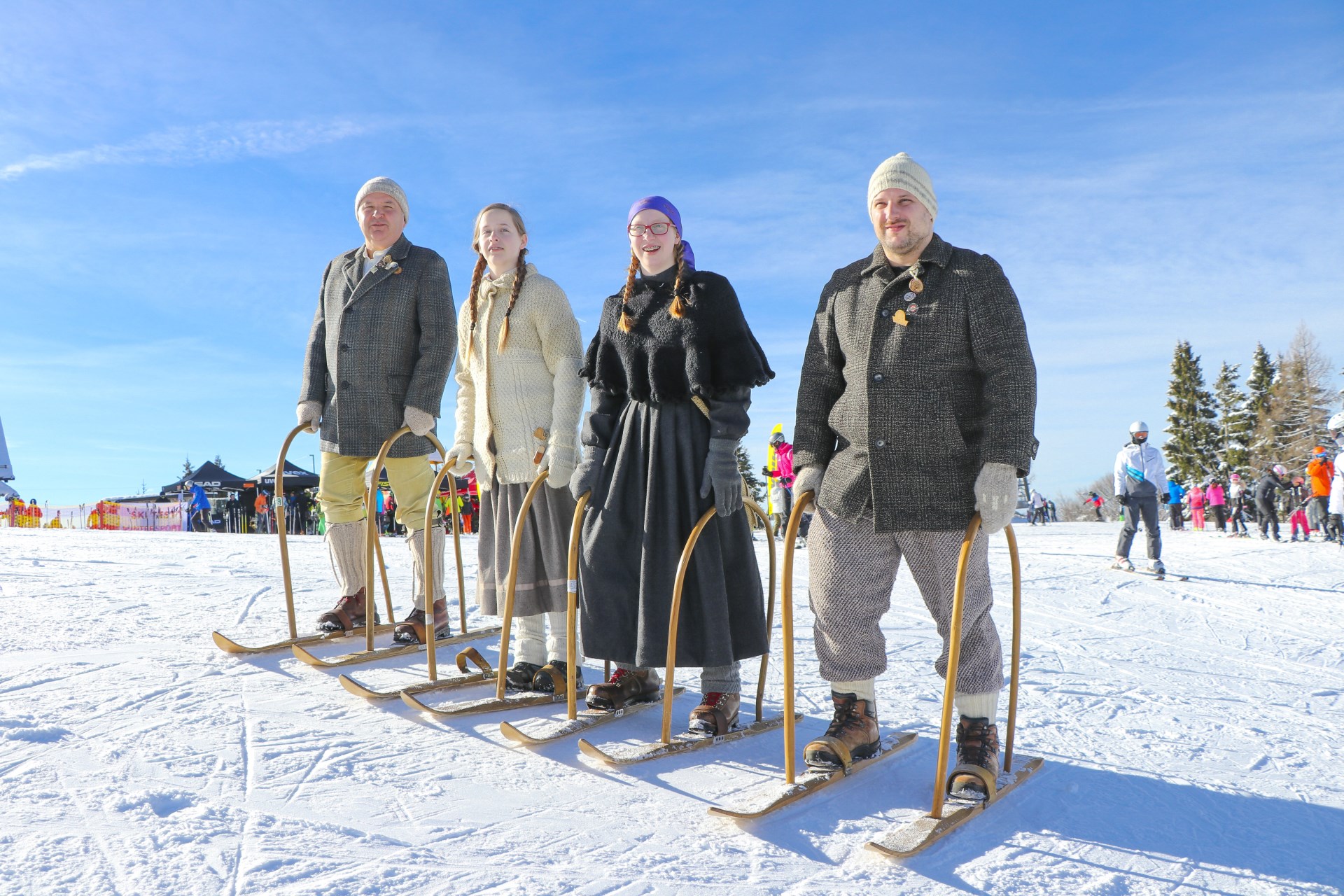Heritage / Cultural Heritage
Unique in Slovenia
The first skis came to these villages in larger numbers only after 1920 with the arrival of the Italian army. This was a mountain warfare military corps, which was equipped with skis in wintertime. This encouraged the villagers of Novaki, especially the young ones, to take an interest in skiing.
The original skis were completely ordinary wooden skis, which had bindings attached in the middle. The Novaki ski then supposedly got its shape because the skis of many Italian soldiers most frequently broke precisely in the middle where the bindings were attached when they were skiing. The broken skis were discarded, but the locals realized that the front parts could still be used. The broken edge was sawed straight and a strap was nailed into the middle, into which a shoe could be placed, but its short size made the ski difficult to control, partly also because of inappropriate bindings. To improve its maneuverability a bow was fitted onto the ski, which stabilized the front and the last part of the ski, making it easier for the skier to keep his balance (according to oral tradition this happened in 1925).
The idea of fitting the ski with a bow probably came from the bow used on the yoke for harnessing the oxen. The bow on the yoke was called “kamba“. These bows on the yoke often got broken and in those times they were considered to be “consumer goods” and practically every farmer was able to make new ones. The bows were formed on a specific contraption, which was dipped into boiling water along with the bow or simply put into the wood-fired oven. Nowadays craftsmen still produce bows for the Novaki skis using similar contraptions.
The “bow” skis were easy to carry as the skier simply swung them on his shoulder upon use and carried them home.
After checking the history of skiing it was not possible to find anything similar to this original patent of the Novaki “bow” skis anywhere in Slovenia.
With the establishment of the Novaki tourist society, the Novaki “bow” ski was brought back from oblivion at the initiative of its member Zdravko Čemažar. Today there is a Novaki “bow” skier section in the society, which attends meetings of traditional skiers in Slovenia and abroad. It is interesting that young people in Novaki show great interest in skiing with the Novaki “bow” ski.
The wish is to protect the Novaki ski as a cultural object of the Novaki village.




